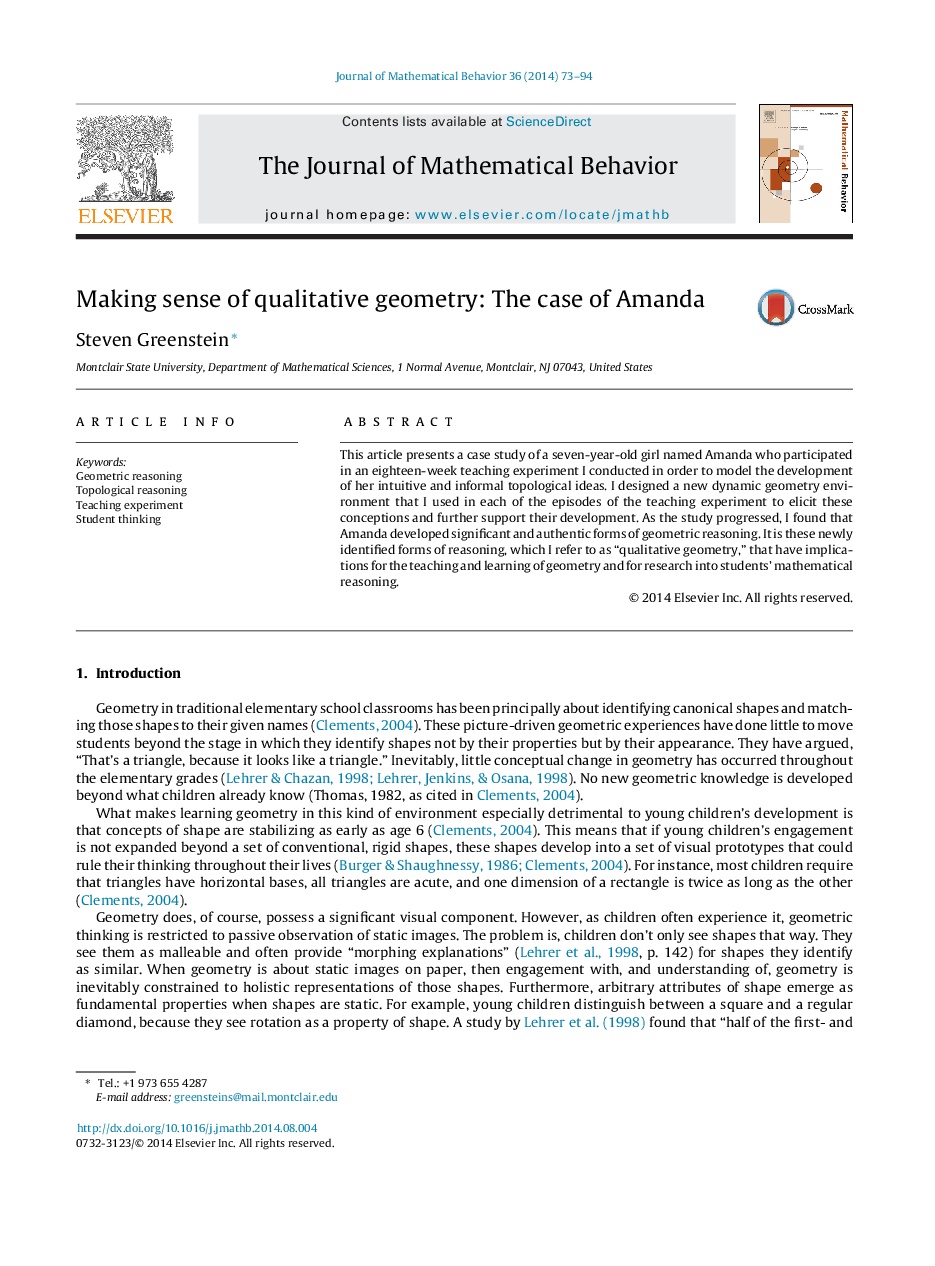| Article ID | Journal | Published Year | Pages | File Type |
|---|---|---|---|---|
| 6843346 | The Journal of Mathematical Behavior | 2014 | 22 Pages |
Abstract
This article presents a case study of a seven-year-old girl named Amanda who participated in an eighteen-week teaching experiment I conducted in order to model the development of her intuitive and informal topological ideas. I designed a new dynamic geometry environment that I used in each of the episodes of the teaching experiment to elicit these conceptions and further support their development. As the study progressed, I found that Amanda developed significant and authentic forms of geometric reasoning. It is these newly identified forms of reasoning, which I refer to as “qualitative geometry,” that have implications for the teaching and learning of geometry and for research into students' mathematical reasoning.
Related Topics
Physical Sciences and Engineering
Mathematics
Applied Mathematics
Authors
Steven Greenstein,
